
|
Solids should be weighed out using the
analytical balance in the laboratory. Remember to
weigh solids into the plastic weighing dish, not
directly on the balance. Sometimes solids will get
spilled during transfer. PLEASE clean up after you
use the balance. Most of the solids are 1.00 g
|
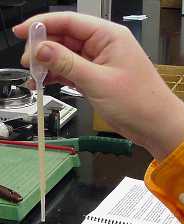
|
Use a calibrated plastic pipet to measure the
liquids.
|
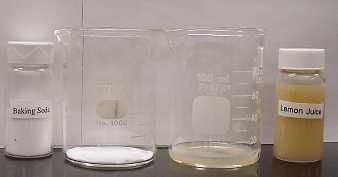 |
Transfer the substance to a 100 mL beaker
|
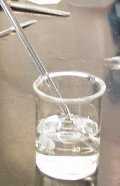
|
Dilute the sample by adding 50 mLs of water.
|
|
After preparing the solution you are ready to
measure its pH. You can see the OSU pH meter being
held in the left hand of our assistant. Remove the
cap on the end of the electrode, and rinse the
electrode with distilled water. Wipe excess water off
using a KIM wipe (see the small green and white box
next to the beaker.) Notes this is a QuickTime movie.
I think most browsers can play QuickTime movies. Let
me know if you have a problem.)
|
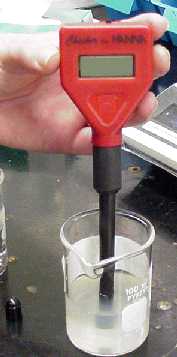
|
Insert the pH electrode into the solution and
be sure to avoid touching the bottom or sides of the
beaker. Swirl the electrode in the solution.
|
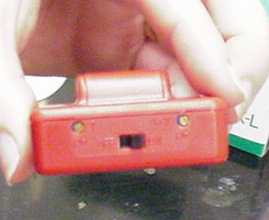
|
On the top of the pH meter is an ON/OFF
switch. Flip the switch to ON.
|
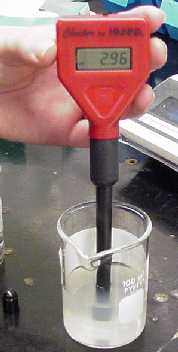
|
Record the pH of the solution on the Results
page. Be sure to give the pH meter reading a moment
to settle down so the value is not fluctuating too
much. Acidic solution will have a pH less than 7. The
lower the pH value the higher the concentration of
hydrogen ion, H+(aq).
Remember to rinse the electrode with distilled
water after each measurement.
|
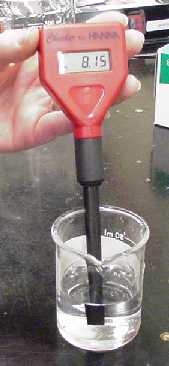
|
Basic solutions will have a pH greater than
7. The higher the pH value the higher the
concentration of hydroxide ion, OH-(aq).
Remember to rinse the electrode with distilled
water after each measurement.
|

|
After you have measured the pH of all of the
samples be sure to turn the pH meter ON/OFF switch to
the OFF position.
|
